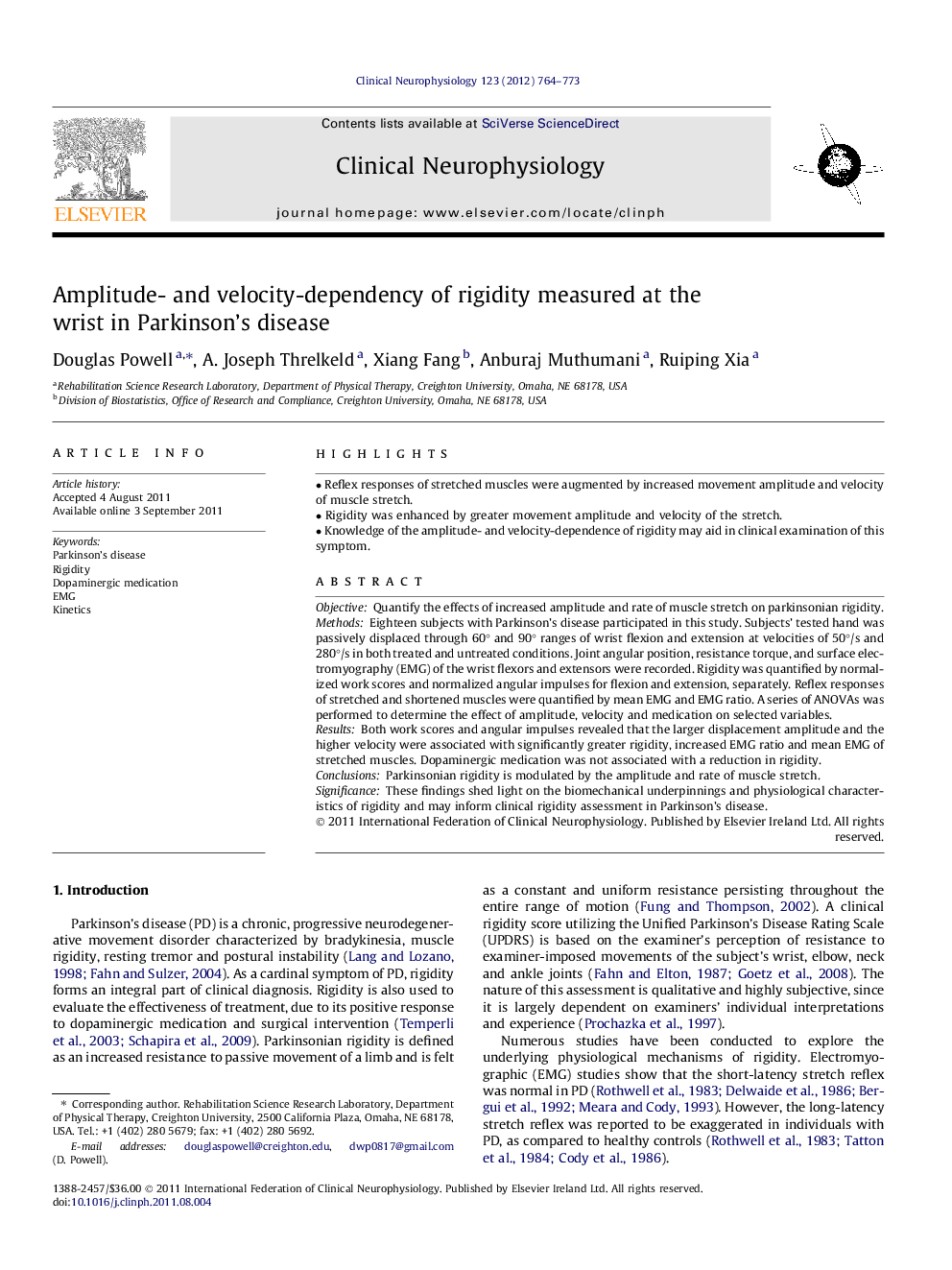| Article ID | Journal | Published Year | Pages | File Type |
|---|---|---|---|---|
| 3043607 | Clinical Neurophysiology | 2012 | 10 Pages |
ObjectiveQuantify the effects of increased amplitude and rate of muscle stretch on parkinsonian rigidity.MethodsEighteen subjects with Parkinson’s disease participated in this study. Subjects’ tested hand was passively displaced through 60° and 90° ranges of wrist flexion and extension at velocities of 50°/s and 280°/s in both treated and untreated conditions. Joint angular position, resistance torque, and surface electromyography (EMG) of the wrist flexors and extensors were recorded. Rigidity was quantified by normalized work scores and normalized angular impulses for flexion and extension, separately. Reflex responses of stretched and shortened muscles were quantified by mean EMG and EMG ratio. A series of ANOVAs was performed to determine the effect of amplitude, velocity and medication on selected variables.ResultsBoth work scores and angular impulses revealed that the larger displacement amplitude and the higher velocity were associated with significantly greater rigidity, increased EMG ratio and mean EMG of stretched muscles. Dopaminergic medication was not associated with a reduction in rigidity.ConclusionsParkinsonian rigidity is modulated by the amplitude and rate of muscle stretch.SignificanceThese findings shed light on the biomechanical underpinnings and physiological characteristics of rigidity and may inform clinical rigidity assessment in Parkinson’s disease.
► Reflex responses of stretched muscles were augmented by increased movement amplitude and velocity of muscle stretch. ► Rigidity was enhanced by greater movement amplitude and velocity of the stretch. ► Knowledge of the amplitude- and velocity-dependence of rigidity may aid in clinical examination of this symptom.
